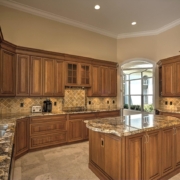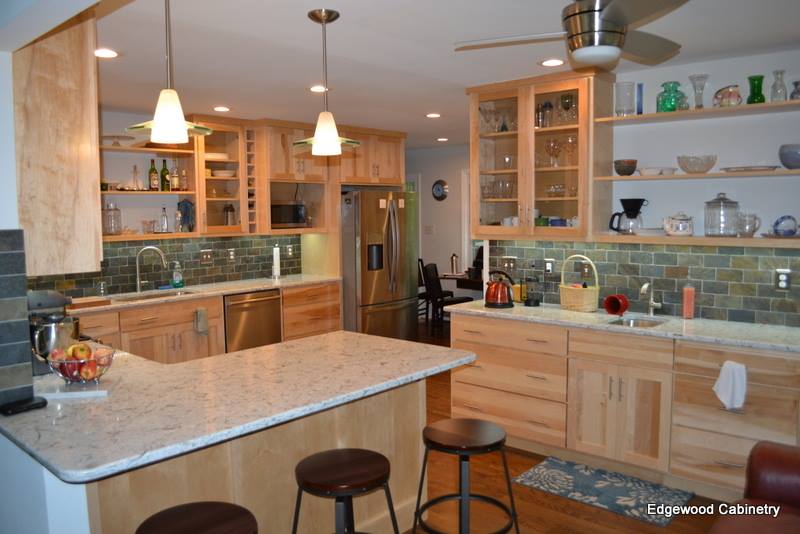Before you start cutting or demolishing anything your kitchen, it’s important to think things through carefully.
Once you start remodeling your kitchen, it’s hard to just stop and go back to what you had before. Plan out what you want before you do anything else.
Think about what type of kitchen you’ll be happy with years from now. After all, most people don’t want to go through a kitchen remodel often.
Consider Trends, But Design For You
Trends are great, but every trend isn’t for you or your kitchen. The problem with kitchen trends is sometimes they go out of style. Ultimately, remodeling your kitchen should be about you, your home and what you want from your kitchen. If it means skipping the trends, that’s okay. You’re the one using the kitchen, so plan with your needs in mind.
Cabinets Are The Most Important Feature
Cabinets are often a focal point for kitchens, but they also get pushed to the side when it comes to a remodeling. After buying all new appliances, changing the floors, expanding the size of kitchen and other tasks, there’s not enough budget left for high-quality cabinets.
You usually choose between plywood or particleboard cabinets. The first is more expensive, but lasts longer. The second is cheaper, but can break down over time and is much more sensitive to moisture. Ensure your budget has room for long lasting cabinets. Consider custom cabinetry for a solution that’s unique to your kitchen.
Think Realistically
Maybe you’re absolutely in love with the open shelving trend. It does make the room look more open, but think realistically. The more open shelving you have, the more often you have to clean all the objects on those shelves. When remodeling your kitchen, think about how you really use it. If it’s not a feature that’s beneficial to you, skip it. Save your budget for what’s most important.
Look At What You Already Have
When you’re trying to figure out the right layout, number and size of cabinets, counter space and height, look at what you already have. How many pots and pans do you need to store? What small appliances do you wish you could hide out of sight? What organizational features have you always wish you had? Looking at what you have and what problems your current kitchen has is a great start to figuring out your remodel.
What Appliances Do You Need
Remodeling your kitchen doesn’t mean you have to start from scratch. It’s far too easy to kill a budget simply by buying all new appliances. If your oven is still fairly new, does it really need replacing? Is it worth buying that trendy new smart fridge right now, or could it wait? You’ll design your kitchen around your appliances too, so consider the possibility that you might soon have something smaller or larger.
Ease Of Use
You’re under no obligation to keep your kitchen’s current layout. Of course, if it works for you, keep it similar. No matter what, think about ease of use before your remodel. For instance, if you’re working with a small space, is an island actually beneficial or more of a hindrance?
As you plan, think of how you want to move, which appliances and gadgets you use most, how many people might be in your kitchen at once and other ways you use your kitchen. If it’s not easy to use, it’s not right for you.
Space Available
No matter what your dream kitchen looks like, you’re still limited by the space you have available. Of course, you may be able to steal some room from adjoining rooms. Even if you can’t gain extra room, the way you arrange cabinets and appliances help give you additional space and the illusion of a much larger kitchen.
Budget
Finally, consider your budget when remodeling your kitchen. If it’s going to cost more than your home to remodel, you might be going overboard. Set a realistic budget and plan your remodel based around that. It’ll also keep you from immediately being drawn to all the trends and most expensive appliances.
Don’t forget to compare your options for custom cabinetry during your kitchen remodel. See how our kitchen cabinet expertise help bring your kitchen vision to life.
Image: George Pastushok












